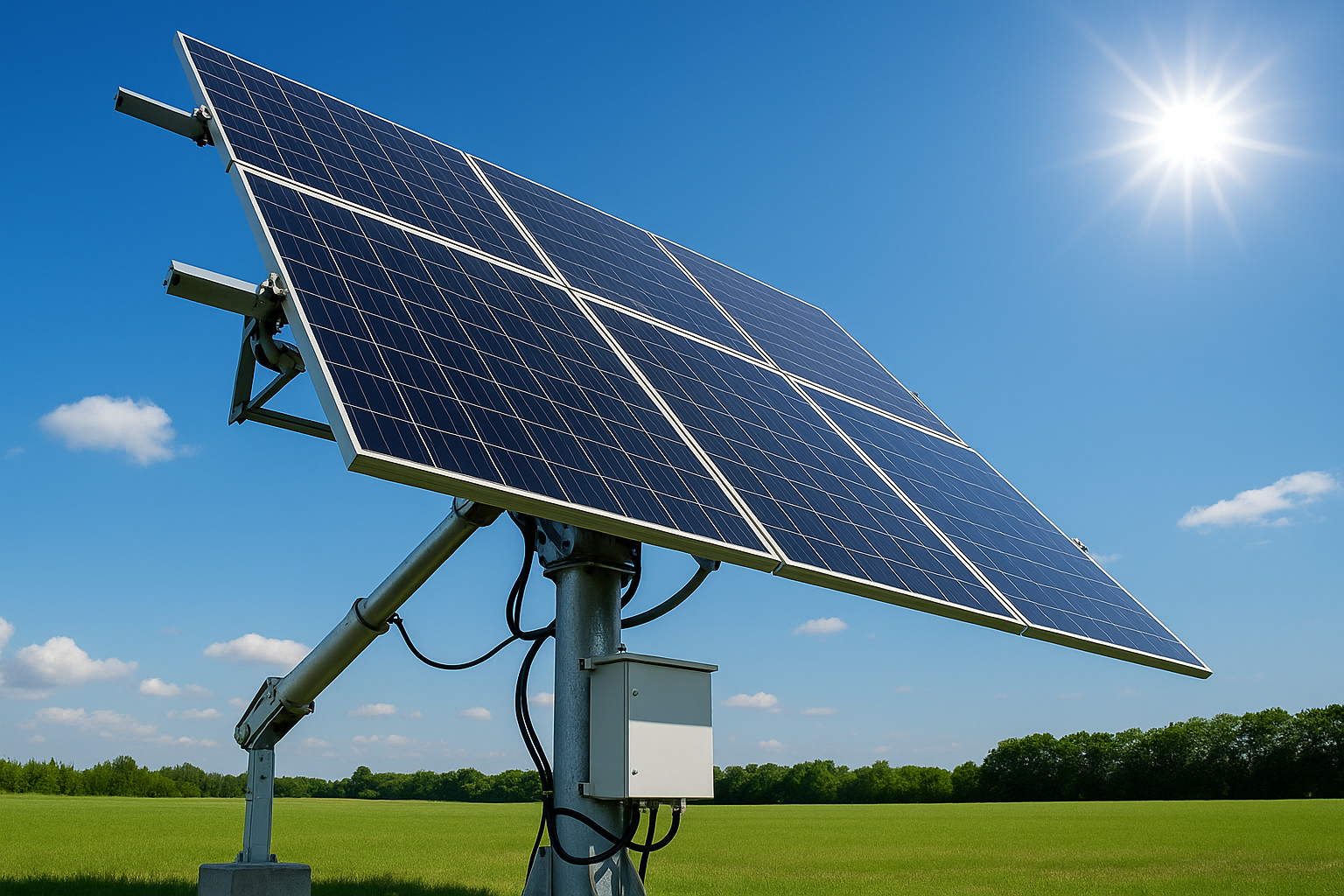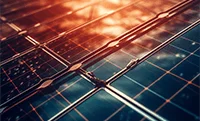Search
People also search for:
The Game-Changer in Solar Energy: Why Dual Axis Trackers Are Better Than Fixed Panels

As solar energy continues to revolutionize how we power homes and businesses, not all solar systems are built the same. While fixed-mount panels have dominated rooftops and solar farms for years, dual axis solar trackers are now emerging as a superior choice—especially for those who want maximum output, faster ROI, and smart technology integration.
In this blog, we’ll explore the key benefits and advantages of dual axis solar trackers and why they outperform traditional fixed systems.
What Is a Dual Axis Solar Tracker?
A dual axis tracker is a solar mounting system that follows the sun in two directions:
East-West (Azimuth)
Up-Down (Tilt or Elevation)
This ensures that the solar panels are always facing the sun at the optimal angle, from sunrise to sunset, across all seasons.
Benefits of Dual Axis Solar Trackers
1. Up to 45% More Power Output
Unlike fixed panels, which are positioned at a static tilt, dual axis trackers dynamically adjust to the sun’s path. This results in 30–45% higher energy yield compared to fixed systems.
2. Faster ROI
The extra output translates to quicker payback periods. Many Sunlogix customers report recouping their investment months earlier than with fixed mounts.
3. Space Efficiency
With dual axis trackers, you can generate the same output in less space. A 3 kW tracker system can match or exceed the output of a 5–6 kW fixed system.
4. Ideal for Bifacial Panels
Dual axis trackers work exceptionally well with bifacial solar panels, which capture sunlight from both sides. The tracker’s tilt helps capture more reflected light from the ground, boosting output even more.
5. Smart Automation
Sunlogix dual axis trackers come with microcontroller-based systems, sun sensors, and wind stow features—making them smart, reliable, and maintenance-free.
6. Real-Time Monitoring
Get detailed data on generation, savings, and tracker movements through remote monitoring platforms. This adds a layer of transparency and performance assurance.
7. Long-Term Reliability
Our dual axis systems use galvanized steel, industrial-grade actuators, and weatherproof components, ensuring a 20+ year lifespan even in harsh conditions.
Key Technical Features Table
| Feature | Specification |
|---|---|
| Tracking Axes | Dual (Azimuth + Tilt) |
| Daily Tracking Angles | 0°–270° Azimuth, 0°–90° Tilt |
| Controller | Microcontroller with Sun & Wind Sensors |
| Wind Protection (Stow) | Automatic stow mode above 50 km/h winds |
| Structure Material | Hot-Dip Galvanized Steel |
| Panel Compatibility | Mono / Bifacial / DCR / TOPCon |
| Power Supply | 24V DC / Solar-Powered Controller |
| Actuator Type | Linear actuators (10,000–30,000N capacity) |
Power Output Comparison Table
| System Type | Capacity | Monthly Output | Annual Units | Yearly Savings |
|---|---|---|---|---|
| Fixed Mount | 5 kW | 700–750 units | 8,400–9,000 | ₹45,000–₹50,000 |
| Dual Axis Tracker | 3 kW | 780–850 units | 9,360–10,200 | ₹50,000–₹55,000 |
How Do Dual Axis Solar Trackers Work?
Dual axis trackers use a smart control system (usually with a microcontroller like ESP32 or Arduino) that reads sunlight direction using LDR sensors or GPS data. The tracker adjusts the azimuth (left to right) and elevation (up and down) angles using:
Linear actuators or gear motors
Limit switches to prevent over-rotation
Optional wind sensors to stow panels flat during storms
These trackers follow the sun’s arc from dawn to dusk, and even adjust for seasonal tilt changes throughout the year.
Dual Axis Trackers + Battery Storage = Energy Independence
When paired with solar batteries or hybrid inverters, dual axis trackers can help you achieve:
100% off-grid capability
Zero blackout protection
Power for nighttime appliances and backup
This is especially useful in rural or tier-2 towns where power cuts are common.
Who Should Use Dual Axis Trackers?
Homeowners:
Reduce your electricity bill by 80–100%
Ideal for homes with open terraces or independent plots
Farmers:
Combine with PM-KUSUM Yojana subsidies for water pumps
Get higher yields on small land plots
Commercial Buildings:
Cut operational costs by up to ₹1,00,000 per year
Use rooftops or open land efficiently
Environmental Impact of Dual Axis Systems
Going solar is already eco-friendly, but dual axis trackers:
Maximize every ray of sunlight
Reduce the number of panels needed (less e-waste)
Lower your carbon footprint faster
Help India achieve its net-zero goals
What’s Included in a Sunlogix Dual Axis Tracker Package?
Solar tracker frame (galvanized)
Smart controller with sensors
Actuators with limit switches
Mounting bolts and wiring kit
Optional: Solar panels and inverter (customizable)
Real-World Use Case: 5kW Dual Axis Tracker in Tamil Nadu
Location: Thanjavur
System: 5 kW dual axis with bifacial panels
Daily Output: 25–30 units (vs. 18–20 on fixed)
Savings: ₹2,000–₹3,000 per month
ROI: ~3 years
Final Thoughts: Invest Smart, Go Dual Axis
If you’re serious about maximizing your solar investment, reducing your electricity bill, and ensuring long-term reliability, a dual axis solar tracker is the smarter choice.
At Sunlogix, we specialize in manufacturing and installing advanced dual axis tracker systems tailored for Indian conditions. Contact us today to explore packages from 3 kW to 10 kW.







Sunlogix